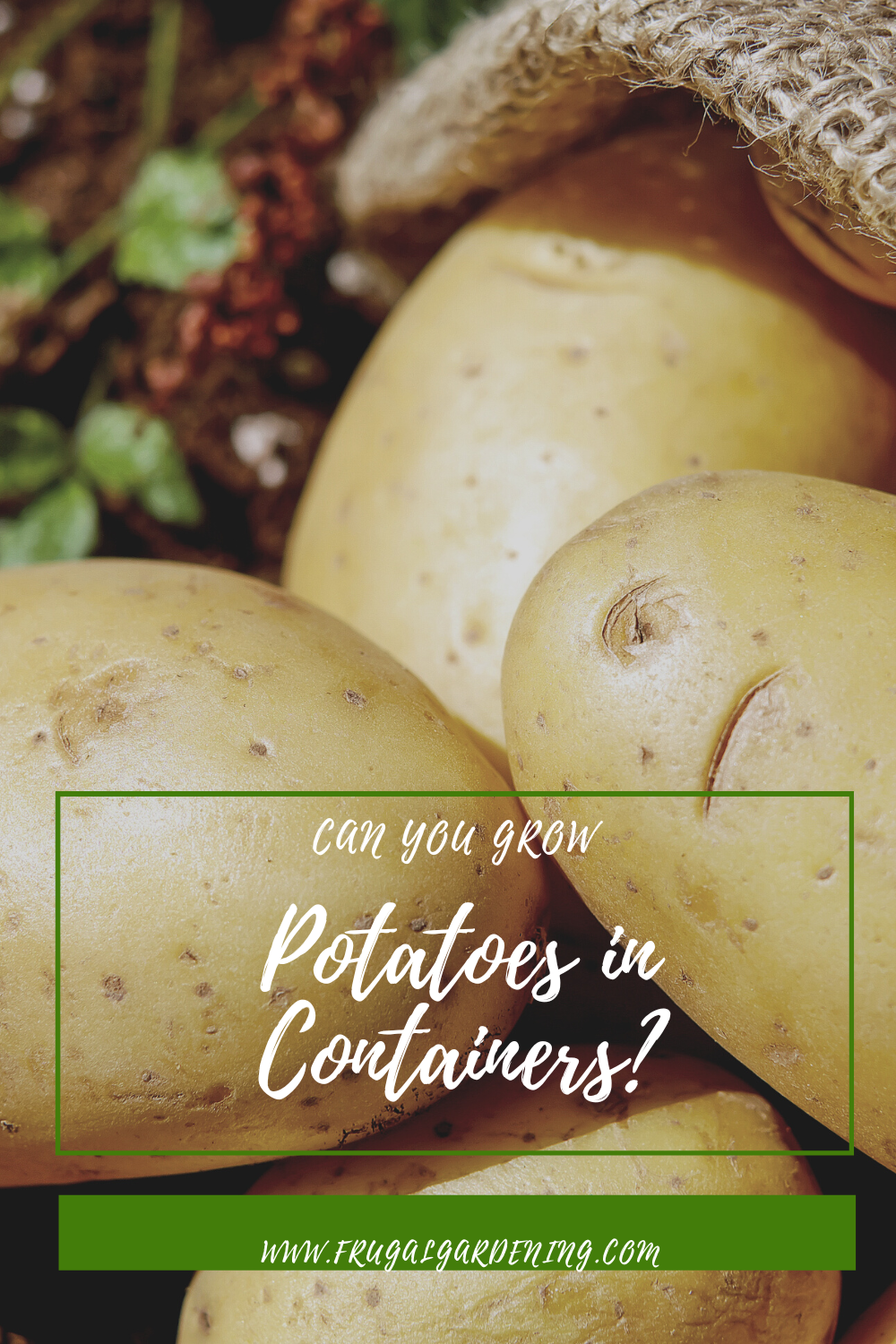
Growing potatoes is so incredibly fun. With a little bit of patience, you’ll be digging up spuds towards the end of the season. The taste of freshly dug potatoes is unparalleled. People say the same about tomatoes, but I genuinely think potatoes win the contest for best-tasting garden edible. Compared to a storebought potato, one from the earth has a creamy, potato-y quality that’s impossible to match. There’s also so much more variety available when choosing seed potatoes compared to shopping the root vegetable aisle at your local grocer: fingerling potatoes, red-skinned varieties, and even blue spuds. But how do you grow potatoes if you don’t have tons of in-ground space?
Can You Grow Potatoes in Containers?
Yes! Absolutely! I wholly recommend growing them in containers instead of using in-ground real estate or large raised beds. A single 5-gallon container yields about 1.5 pounds of potatoes.
Benefits of Growing Potatoes in Containers
What’s the advantage of growing potatoes in containers? Here are the benefits of growing in containers:
- Inexpensive. There’s no need to build a garden bed, there are plenty of cheap container options available from fabric pots to upcycled vessels like empty recycling bins.
- Easy to relocate. Did you plop the containers somewhere where you’ve realized there’s not enough sun? Simply drag the containers to a sunnier spot.
- Easy harvest. No need to dig around for hours to find spuds. Dump out the container and sift through the dirt. Since you’re less likely to leave behind diseased potatoes, there’s also a decreased chance of pest and disease in the following year.
- Great for small spaces. Don’t have a large garden? You might think it’s time to give up on planting potatoes. Not so fast! Containers are great for gardeners with limited room. Grow taters or your porch or balcony.
How to Grow Potatoes in Containers
Plant 1-2 seed potatoes in a single 5-gallon bucket and double that amount for large containers. Fill your container up with enough soil (mixed with plenty of compost) to cover those newly planted seed potatoes.
As days go by, you’ll notice foliage start to appear. Continue to add enough soil mix to cover the stems and tubers, but don’t bury the leaves.
Potatoes need plenty of sun and regular watering. However, it’s best to avoid high-nitrogen fertilizers as they will increase foliage production but reduce tuber formation.
When Do I Harvest Potatoes?
Potatoes are ready to harvest when the tops have completely died back. Attempting to dig them up too soon may hinder tuber development and leave you with a smaller crop. Still not sure when the time is right? Read more about harvesting potatoes.

Steph Coelho is a freelance writer gardening in zone 5b. She is a certified Square Foot Gardener and has taught various garden-related workshops. When she’s not digging in the dirt or writing, she’s cooking up fresh produce, running, or listening to her favorite podcasts.
Leave a Reply